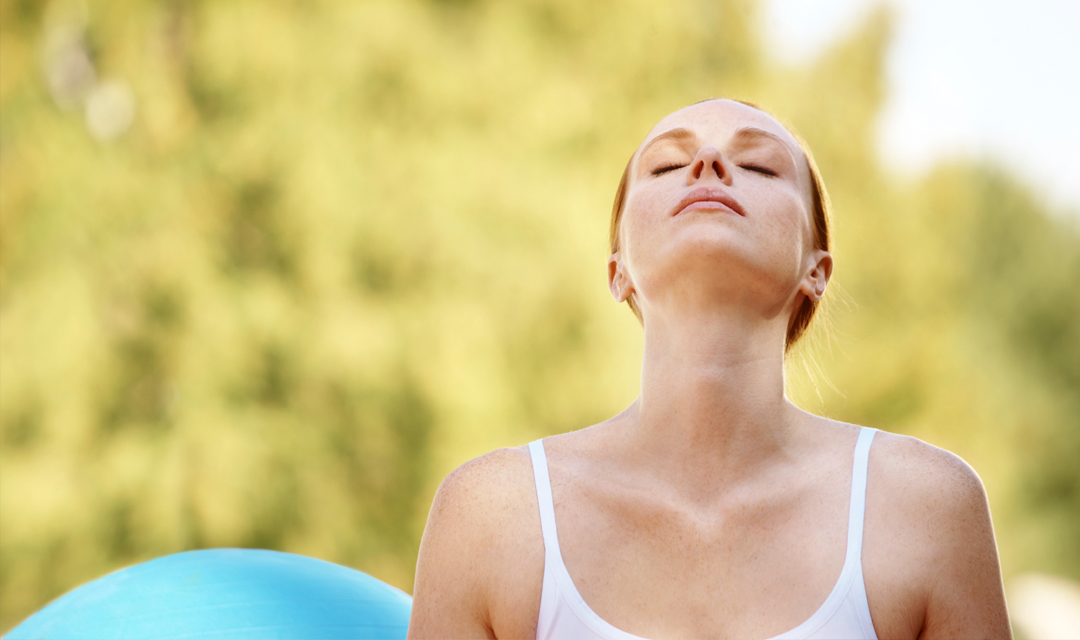The average adult takes between 17,000–30,000 breaths per day. Every single one of those breaths are done unconsciously. But the minute you switch from unconscious breathing to conscious breathing, you experience significant physical and mental benefits.
Conscious breathing can improve your ability to concentrate; increase your athletic performance; reduce stress and anxiety; strengthen your immune system; and induce better sleep.
Here are four simple breathing exercises to help you you think, perform, and sleep better:
1. Alternate nostril breathing for better concentration
Alternate nostril breathing stimulates your alpha and beta brainwaves This results in a “balancing effect” between the brain’s hemispheres and boosts your ability to focus and process information.
To do the technique:
- Place your right thumb onto your right nostril. Close it and inhale slowly through your left nostril.
- Then close your left nostril (using your ring finger), and exhale out through your right nostril.
- Inhale through your right nostril. Close your right nostril, and exhale out through your left nostril.
Continue this alternating pattern for up to ten minutes. It will also help clear your sinuses. Here’s a detailed video demo.
2. The “Bee breath” to relieve anxiety
When a situation makes you nervous or stressed, your breathing becomes shallow and limits the oxygen to your brain. This affects your thinking process and the erratic thoughts can lead to an anxiety attack.
An effective technique for calming your mind and relieving anxiety is called “Bee breath.” It incorporates a soothing humming sound, to draw your mind away from the scattered thinking.
- Find somewhere quiet and private; start with taking a few slow natural breaths, and close your eyes.
- Then, keeping the lips lightly sealed, inhale through the nostrils. As you exhale, make the sound of the letter “M,” essentially a humming sound.
- Gently sustain the sound until you need to inhale. Repeat for as long as you’d like.
Advanced versions include pressing your fingers gently on your ears. Video demo here.
3. Diaphragmatic and synchronized breathing for physical performance
Most people are “chest breathers,” not “belly breathers” when it comes to exercise. You can increase your endurance and lung capacity by fully engaging your diaphragm.
- Before any physical activity, take in a deep breath, drawing the air right down into the pit of your stomach. You can place your hand on your belly to feel it expand.
- Then exhale with short burst (as if blowing out a candle). This activates your diaphragm, like priming the engine.
- Finish with a long, slow exhale to empty your lungs — breathlessness comes from not expelling enough carbon dioxide.
Also, try synchronizing your breathing with your body movements. Exhaling on any intense or impactful movement will help balance your energy exertion; just like boxers will exhale with a punch, and bodybuilders will exhale when they lift weights.
A rhythmic breathing method is also used by runners — using a 3:2 pattern means you would inhale for three foot strikes, exhale for two. When you exhale, your core muscles relax, reducing the strain on your joints and ligaments and allowing smoother transitions of movement.
4. The “4-7-8 method” to fall asleep
Insomniacs can fall asleep in less than a minute using the “4-7-8 method,” according to Dr. Andrew Weil, founder of the Centre for Integrative Medicine at the University of Arizona. The technique equally engages the body and mind, and is effective due to the fast removal of carbon dioxide. It can be done while lying in bed:
- Exhale completely through your mouth, making a whoosh sound.
- Close your mouth and inhale through your nose to a mental count of four.
- Hold your breath for a count of seven.
- Exhale completely through your mouth, making a whoosh sound to a count of eight — this is one breath.
- Inhale again and repeat the cycle three more times for a total of four breathes
Dr. Weil recommends placing the tip of your tongue just behind your upper front teeth, against the ridge of tissue, and keeping it there for the entire exercise. You’ll be exhaling through your mouth around your tongue; open your lips slightly — this will help with abdominal breathing. Here’s a video demo by Dr. Weil.
If you have any other breathing exercises that you’d like to suggest, please leave them in the comments section below. Also, don’t forget to share this article with your friends and family. I’m sure they can benefit from these breathing exercises too!
Author: Thai Nguyen
Thai is a perpetual student and teacher. He enjoys sharing everything he learns on The Utopian Life.














